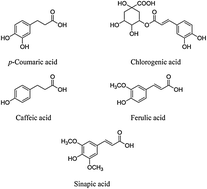Effect of osmotic treatments and drying methods on bioactive compounds in papaya and tomato
Abstract
We determined the retention of bioactive compounds, including phenolic acids, flavonoids and carotenoids, in papaya and tomato as affected by osmotic treatment and drying methods. Two drying methods, namely, combined far-infrared radiation and air convection (FIR-HA) drying and hot air (HA) drying, were used for drying the untreated and osmotically treated samples. Five treatments groups were studied, including untreated sample dried with FIR, untreated sample dried with HA, osmotically treated sample, osmotically treated sample dried with FIR, and osmotically treated sample dried with HA, compared with a fresh sample. The results showed that non-osmotically treated samples dried with FIR had the highest values of total phenolic content, DPPH and FRAP among all samples, including fresh papaya and tomato. Chlorogenic acid was increased by FIR and HA drying in an untreated sample, while sinapic and ferulic acids were most preserved by osmotic treatment. It was found that the lycopene and lutein contents were significantly increased by both FIR and HA methods in papaya without osmotic treatment. However, the contents of beta-carotene and total flavonoids were decreased by all treatments.


 Please wait while we load your content...
Please wait while we load your content...